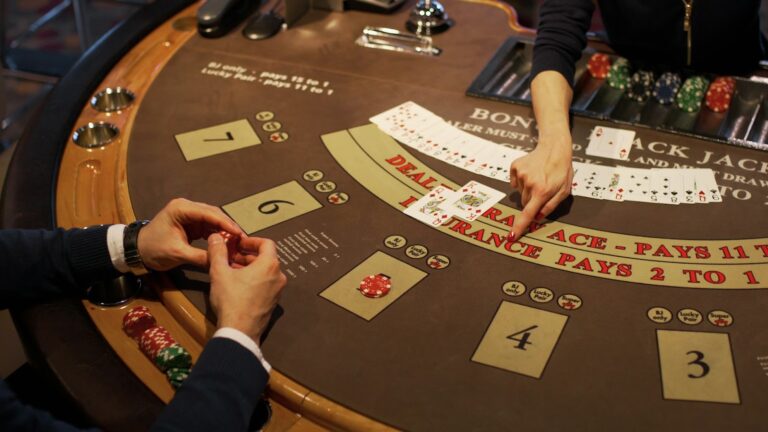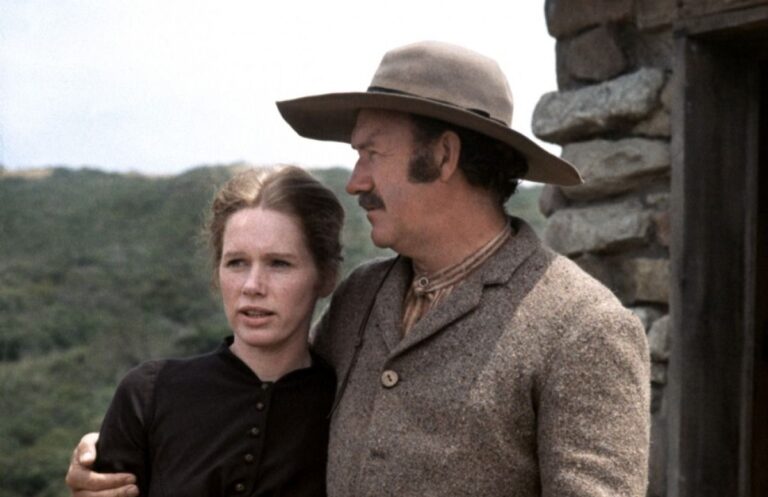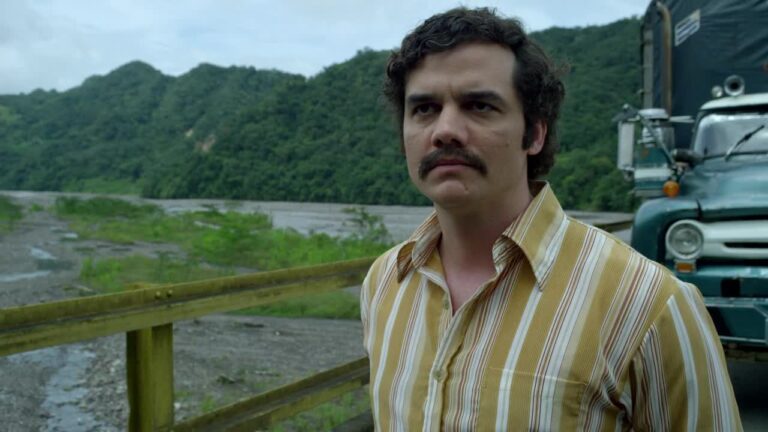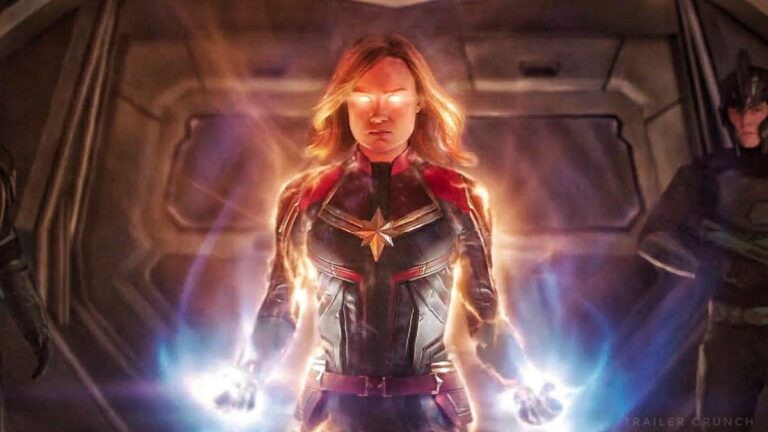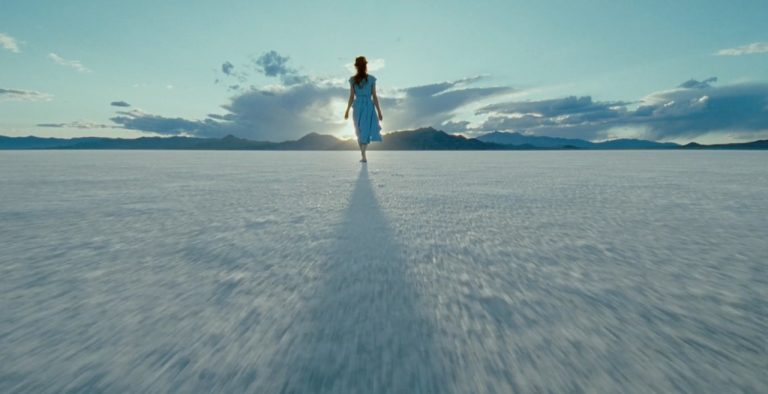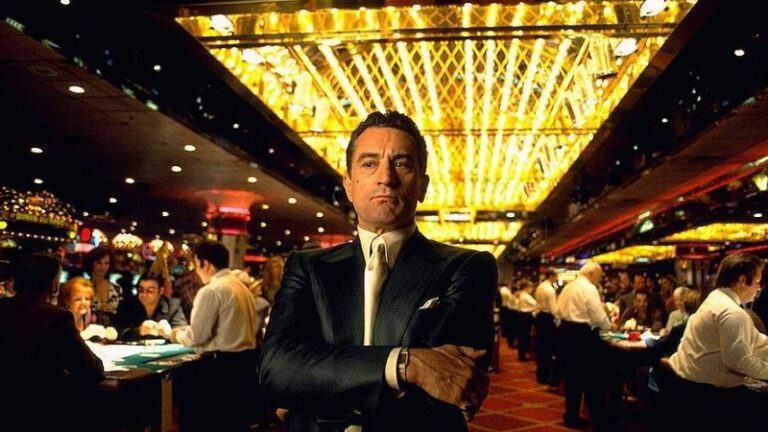Movies That Start With H: Alphabetical Adventures in Cinema
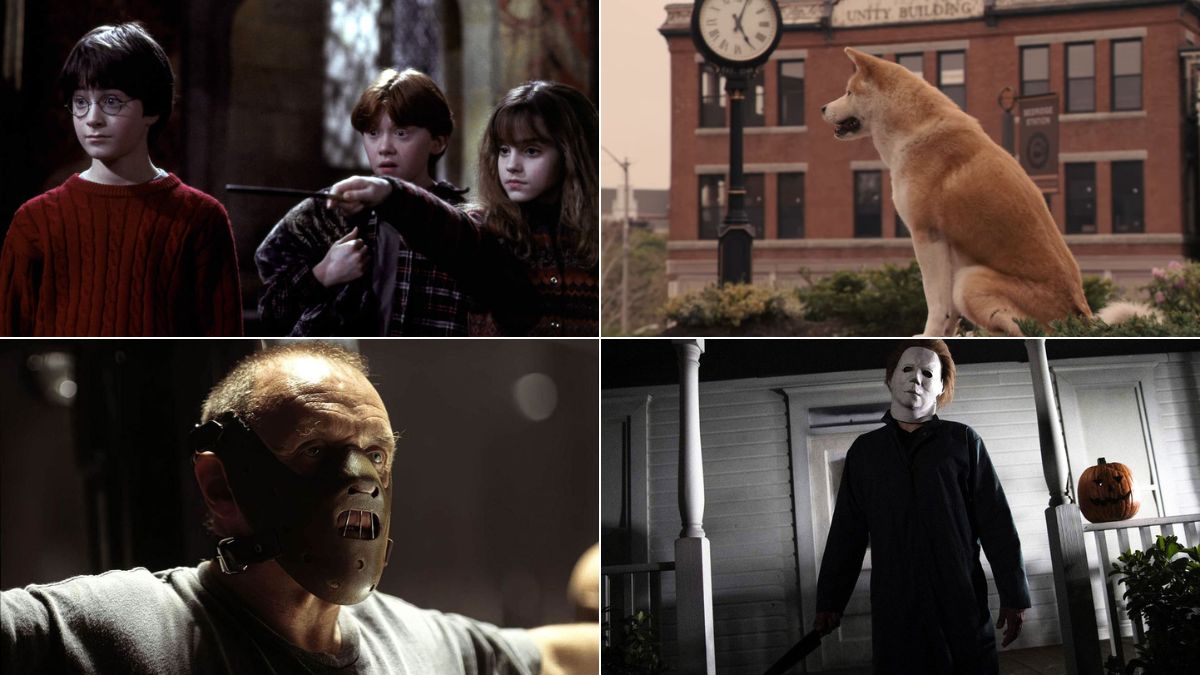
Dive into the diverse world of cinema as we journey through titles that share a common beginning—the letter “H”. From heartwarming tales to hair-raising thrillers, movies that start with this eighth letter of the alphabet offer a unique array of storytelling that captivates and challenges the mind. Join us on this alphabetical adventure as we explore 20 films that proudly wear the “H” badge.
“Hachi: A Dog’s Tale” (2009)
Based on the real-life tale of Hachikō, a loyal Akita dog from Japan, “Hachi: A Dog’s Tale” is an emotionally stirring story that captures the essence of devotion and love. Directed by Lasse Hallström and starring Richard Gere, the film chronicles the bond between a college professor and a stray dog he adopts.
As the narrative unfolds, the dog’s unwavering loyalty, demonstrated by his daily vigil for his deceased master at the train station, tugs at the heartstrings of the community and the viewers alike. This heartwarming story serves as a testament to the timeless and unbreakable bond between man and his best friend, and its universality only emphasizes the age-old adage that dogs truly are man’s most faithful companion.
In a world where relationships often crumble under the slightest strain, the tale of Hachi is a beacon of hope and unwavering love. Not just a story about a dog, but rather about commitment, loyalty, and the purest form of love, this film leaves an indelible mark on its audience.
Whether you’re a pet owner or not, “Hachi: A Dog’s Tale” resonates with a poignant message about the depth of connections and the lengths we go to for those we care deeply about.
“Hackers” (1995)
Diving deep into the intriguing and revolutionary world of the 90s cyber subculture, “Hackers” presents a kaleidoscopic vision of the digital age’s early pioneers. Directed by Iain Softley and starring Angelina Jolie and Jonny Lee Miller, the film amalgamates thrill, passion, and the spirit of youthful rebellion.
As a group of young hackers stumbles upon a conspiracy that could spell disaster on a global scale, their skills, friendship, and ethics are put to the test. With visually captivating sequences and a pulsating soundtrack, “Hackers” provides a glimpse into an underground world full of codes, digital avatars, and electronic battlegrounds.
While some may argue that the technology portrayed in the film might seem dated by today’s standards, the ethos of the hacker culture depicted is timeless. Exploring themes of privacy, freedom of information, and collective responsibility, “Hackers” doesn’t just entertain but also sparks conversations about the digital realm’s moral and ethical dimensions.
As it captures the zeitgeist of its time, it remains a cult classic, serving as a nostalgic trip for those familiar with the dawn of the internet age and an eye-opener for the newer generation intrigued by the roots of today’s cyber landscape.
“Hairspray” (1988, 2007)
Energetic, vibrant, and filled with toe-tapping numbers, “Hairspray” is a musical extravaganza that takes audiences back to the 1960s, touching upon themes of racial integration and self-acceptance. Originally a 1988 John Waters film, it was reimagined into a musical and then adapted again for the screen in 2007 with a star-studded cast including John Travolta, Queen Latifah, and Michelle Pfeiffer.
At the heart of the story is Tracy Turnblad, a vivacious teenager with dreams of dancing on “The Corny Collins Show”. Despite facing body-shaming and prejudice, Tracy becomes an unexpected sensation and uses her newfound influence to advocate for racial integration on the show.
Beyond its catchy tunes and dance routines, “Hairspray” delivers powerful messages about acceptance and change. Both adaptations, while set against the backdrop of the early ’60s civil rights movement, present an ever-relevant commentary on society’s beauty standards and the importance of diversity and inclusion.
The films serve as a reminder that change, no matter how small in scale, starts with individual actions. As Tracy boldly declares, “People who are different, their time is coming!” – a sentiment that resonates across generations and eras.
“Half Nelson” (2006)
“Half Nelson” delves into the contrasting dualities of human nature through its compelling narrative, offering a raw and realistic portrayal of addiction, relationships, and redemption. Directed by Ryan Fleck and masterfully acted by Ryan Gosling, the story follows Dan Dunne, a dedicated middle school history teacher who, behind the façade of his teaching persona, grapples with a crippling drug addiction.
His life takes an unexpected turn when one of his students, Drey, played by Shareeka Epps, discovers his secret, leading to an unusual bond built on mutual vulnerabilities and understanding.
While many films opt for an idealized representation of teachers, “Half Nelson” provides a more humanized lens, showing that even the most passionate educators are not immune to personal struggles. The film’s power lies in its refusal to moralize or preach; instead, it presents its characters in all their flawed complexity, allowing the audience to draw their own conclusions.
By addressing socio-economic issues, racial dynamics, and personal battles, “Half Nelson” provides a poignant commentary on the human condition and the intricate interplay between despair and hope.
“Halloween” (1978)
Marking its territory as one of the most iconic horror films of all time, John Carpenter’s “Halloween” introduced the world to Michael Myers, the masked killer whose sinister presence looms large every Halloween night. Set in the fictional town of Haddonfield, the film chronicles the return of Michael Myers to his hometown after escaping a mental institution, fifteen years after he murdered his sister on Halloween night.
The movie masterfully builds suspense as Myers stalks Laurie Strode, portrayed by a young Jamie Lee Curtis, culminating in a spine-chilling confrontation.
Carpenter’s innovative use of camera angles, shadow play, and the film’s haunting score (which he composed himself) set “Halloween” apart from other slasher films of its era. More than just a series of jump scares, it delves into deeper themes of evil and its inexplicability. Michael Myers, with his expressionless white mask and relentless drive, embodies the concept of pure, motiveless evil, making him one of cinema’s most unforgettable antagonists.
“Halloween” didn’t just spawn numerous sequels and inspired countless other horror films; it permanently etched the chilling sounds of its theme and the ominous sight of Michael Myers into the cultural psyche, proving that true terror often lies in simplicity and anticipation.
“Hamlet” (1996)
Directed by Kenneth Branagh, the 1996 adaptation of William Shakespeare’s “Hamlet” stands out as one of the most ambitious and comprehensive film versions of the Bard’s iconic tragedy. Branagh, who also stars in the titular role, offers a full-length, uncut rendition of the play, clocking in at over four hours.
This meticulous attention to detail allows audiences to delve deep into the intricate layers of Shakespeare’s narrative, exploring themes of betrayal, revenge, madness, and mortality. Set against the grandeur of Blenheim Palace, the film boasts a stellar cast, including Derek Jacobi, Julie Christie, and Kate Winslet. The opulent setting and cinematography enhance the visual storytelling, making this adaptation a feast for both the eyes and the soul.
While some might argue that the film’s length is overwhelming, it provides a unique opportunity to experience the play in its entirety, an endeavor rarely undertaken by filmmakers. Branagh’s “Hamlet” is not just an adaptation but a passionate love letter to Shakespeare’s genius.
By preserving every line and soliloquy, the film grants audiences a chance to immerse themselves fully in the poetic beauty and profound insights of one of literature’s greatest works. From Hamlet’s contemplative “To be or not to be” to the play’s tragic culmination, Branagh’s dedication to authenticity ensures that the essence of Shakespeare’s masterpiece remains undiluted.
“Hancock” (2008)
In a departure from the conventional superhero narrative, “Hancock,” directed by Peter Berg and starring Will Smith, presents an anti-hero grappling with public disdain, personal demons, and a fragmented memory. Hancock, despite his superhuman abilities, is often found drunk, careless, and detached, leaving a trail of unintended destruction in his wake.
While his intentions to save the day are genuine, his methods and demeanor make him more of a public nuisance than a beloved savior. This changes when he saves PR expert Ray Embrey (Jason Bateman), who, in gratitude, offers to refurbish Hancock’s image, aiming to transform him into the superhero the city can love and respect.
What sets “Hancock” apart from other superhero films is its exploration of vulnerability, identity, and redemption. The movie delves deep into the emotional and psychological complexities of its protagonist, painting a picture of a lonely individual in search of purpose and connection.
With elements of humor, drama, and action blended seamlessly, “Hancock” challenges the stereotypical superhero archetype, forcing audiences to redefine heroism. As secrets unravel and relationships strain, the film becomes a poignant reflection on love, sacrifice, and the human (or superhuman) need for acceptance and belonging.
“Hang ‘Em High” (1968)
Drenched in the rugged landscape of the Wild West and infused with the spirit of justice and revenge, “Hang ‘Em High,” directed by Ted Post and starring Clint Eastwood, tells the tale of Jed Cooper, a former lawman mistaken for a cattle rustler and murderer.
After being brutally lynched by a self-appointed posse and left for dead, Cooper survives and is determined to bring his would-be executioners to justice. Appointed as a U.S. Marshal, he embarks on a relentless quest to find those who wronged him, torn between personal vengeance and the obligations of his badge.
The film, while adhering to many traditional Western tropes, offers a commentary on the nature of justice, mob mentality, and the fine line between lawful retribution and personal vendetta. Eastwood, known for his iconic roles in the genre, brings depth and gravitas to his character, ensuring that Jed Cooper is not just another cowboy out for revenge but a symbol of a broader struggle against unchecked brutality and vigilante justice.
“Hang ‘Em High” serves as a reflection on the consequences of taking the law into one’s own hands, questioning the morality of vengeance and the cost of blind retribution.
“Hanna” (2011)
“Hanna,” directed by Joe Wright, offers a thrilling blend of coming-of-age drama and high-octane action, centering around Hanna (Saoirse Ronan), a teenager raised in the remote forests of Finland by her father, Erik (Eric Bana). Trained to be the perfect assassin, she possesses skills and knowledge far beyond her years.
However, underneath her lethal exterior lies the heart of a girl yearning for experiences beyond her sheltered upbringing. When she’s separated from her father and pursued by an unrelenting CIA operative (Cate Blanchett), Hanna embarks on a journey that spans countries and challenges her understanding of the world and her place in it.
The film’s beauty lies in its juxtaposition of Hanna’s innocence with the brutal world she navigates. As she encounters the complexities of human relationships, friendship, and betrayal, the narrative becomes more than just a chase; it’s an exploration of identity and humanity.
With its pulsating score, crafted by The Chemical Brothers, and meticulously choreographed action sequences, “Hanna” seamlessly blends the raw emotion of adolescence with the mercilessness of espionage, creating a unique cinematic experience that resonates long after the credits roll.
“Hannibal” (2001)
A sequel to the critically acclaimed “The Silence of the Lambs,” “Hannibal” continues the chilling tale of the sophisticated yet monstrous Dr. Hannibal Lecter, portrayed once again by the inimitable Anthony Hopkins. Directed by Ridley Scott, the film finds Lecter, a decade after his escape, living under a new identity in Florence, Italy, while FBI agent Clarice Starling, played by Julianne Moore, remains haunted by her past interactions with the doctor.
As old foes and ambitious detectives close in on Lecter, the lines between hunter and prey blur, leading to a series of events that are as psychologically complex as they are gruesomely graphic.
What sets “Hannibal” apart is its exploration of the intricate dance between Lecter and Starling. Their relationship, defined by a mix of fascination, respect, and underlying menace, forms the backbone of the narrative. While the film delves deep into the macabre, showcasing Lecter’s unapologetic brutality, it simultaneously humanizes him, forcing viewers to grapple with their own perceptions of morality and attraction.
“Hannibal” doesn’t just serve as a continuation of a terrifying story but as a deeper exploration of the human psyche, obsession, and the unsettling realization that monsters, sometimes, wear the most charming faces.
“Happy Feet” (2006)
George Miller’s animated musical “Happy Feet” is a delightful journey into the heart of Antarctica, bringing to life the vibrant world of Emperor Penguins. Each penguin has a unique “heartsong” that helps them find their soulmate. However, young Mumble, voiced by Elijah Wood, stands out because he cannot sing.
Instead, he possesses an extraordinary ability to tap dance. In a community that values conformity, Mumble’s dancing is seen as an anomaly, causing him to be ostracized and misunderstood. Through breathtaking animation and foot-tapping music, the film weaves a tale of self-discovery, acceptance, and the importance of embracing one’s individuality.
While “Happy Feet” entertains with its spectacular dance sequences and memorable songs, it also addresses profound environmental and social issues. The film subtly touches on topics like overfishing, pollution, and the impact of human activities on delicate ecosystems.
At its core, it’s a narrative that champions the spirit of being true to oneself, regardless of societal expectations. With its heartwarming story, relatable characters, and underlying messages, “Happy Feet” resonates with both children and adults, teaching valuable lessons about love, tolerance, and the power of being unique.
“Hard Boiled” (1992)
John Woo’s “Hard Boiled” is an exhilarating foray into the world of action cinema, combining relentless shootouts with intricate choreography to create a symphony of bullets and explosions. The film centers on Tequila, a maverick cop portrayed by Chow Yun-Fat, who teams up with an undercover agent to take down a ruthless gang of gun smugglers.
Set in the neon-lit streets of Hong Kong, the narrative unfolds with kinetic energy, showcasing Woo’s signature style of slow-motion gunfights, intricate set pieces, and moments of poetic violence.
“Hard Boiled” isn’t just an action extravaganza; it’s an exploration of loyalty, duty, and the blurred lines between good and evil. Amid the cascade of bullets and bloodshed, the film delves deep into the psyche of its protagonists, portraying their internal struggles and moral dilemmas.
Woo masterfully balances heart-pounding action with emotional depth, ensuring that the audience is not only thrilled but also emotionally invested. With its combination of intense performances, masterful direction, and a pulsating score, “Hard Boiled” has rightfully earned its place as one of the pinnacles of action cinema.
“Harold and Maude” (1971)
Hal Ashby’s “Harold and Maude” is a beautifully unconventional love story that defies societal norms and expectations. The film revolves around the unlikely romance between Harold, a young man obsessed with death, and Maude, a 79-year-old woman with an insatiable zest for life. Their peculiar relationship, marked by shared antics, profound conversations, and a mutual disdain for societal conventions, offers a refreshing perspective on love, life, and the beauty of non-conformity. With its dark humor, poignant moments, and memorable soundtrack by Cat Stevens, the movie challenges traditional notions of relationships and celebrates the spirit of living life on one’s own terms.
At the time of its release, “Harold and Maude” was polarizing, with some unable to look beyond its unconventional premise. However, as years have passed, the film has garnered a cult following and is often regarded as a masterpiece of American cinema. It serves as a reminder that love knows no bounds, age or otherwise. By blending elements of dark comedy with profound insights, “Harold and Maude” offers a timeless commentary on the human need for connection, understanding, and the importance of cherishing every moment.
“Harry Potter and the Sorcerer’s Stone” (2001)
“Harry Potter and the Sorcerer’s Stone,” directed by Chris Columbus and based on J.K. Rowling’s acclaimed novel, marked the beginning of a cinematic journey that would captivate audiences worldwide. The film introduces us to Harry Potter, a young orphan living under the oppressive care of his cruel relatives, unaware of his true heritage. On his eleventh birthday, Harry discovers that he is a wizard and has been accepted to Hogwarts School of Witchcraft and Wizardry. As he delves into this magical world, he learns about his past, makes loyal friends, confronts adversaries, and embarks on a quest to prevent the return of the dark wizard Voldemort.
Columbus’ adaptation successfully captures the enchantment, mystery, and wonder of Rowling’s universe. From the grandeur of Hogwarts Castle to the intricate details of the magical artifacts, the film is a visual delight. More than just a tale of magic, it’s a story of friendship, courage, and self-discovery. As audiences watched Harry, Hermione, and Ron navigate the challenges of their first year at Hogwarts, they were not only transported to a world of spells and sorcery but also reminded of the timeless values that define our humanity. The film laid the foundation for a saga that would become an integral part of global pop culture, enchanting both young and old.
“Harvey” (1950)
Directed by Henry Koster and based on the Pulitzer Prize-winning play by Mary Chase, “Harvey” is a heartwarming tale that effortlessly combines humor with deep philosophical introspection. James Stewart’s portrayal of Elwood P. Dowd, a genial man who claims to have an unseen (by others) friend Harvey — a six-foot-three-inch tall rabbit, is both charming and touching.
As Elwood navigates a world where his sanity is constantly questioned, the film delves deep into the societal norms that define ‘normalcy’. While the people around Elwood scramble to ‘cure’ him, the audience is invited to ponder whether it’s Elwood who’s mad, or if it’s the world around him that’s lost touch with the magic of innocence and imagination.
“Harvey” is a cinematic gem that goes beyond its comic veneer to challenge perceptions of reality and the boundaries of societal acceptance. At the heart of this narrative is a man who, despite the pressures of the world, remains unwavering in his kindness, simplicity, and faith in the unseen.
The movie subtly juxtaposes the visible but often shallow world with the invisible depths of human emotions and beliefs. Through the enigmatic character of Harvey, the story underscores the importance of kindness, acceptance, and the simple joys of life. It’s a poignant reminder that sometimes, seeing is not always believing, and believing can be the most profound sight of all.
“Heat” (1995)
Michael Mann’s “Heat” is not just a heist film; it’s a profound exploration of duality, professional dedication, and personal isolation. Set against the sprawling, sun-soaked backdrop of Los Angeles, the film brings together two cinematic heavyweights, Robert De Niro and Al Pacino, in a cat-and-mouse game that transcends typical crime narratives.
De Niro plays master thief Neil McCauley, while Pacino portrays Lt. Vincent Hanna, the relentless detective trailing him. The lines between cop and criminal blur as the two find they share more in common than their professions might suggest. Their inevitable confrontation, heightened by Mann’s meticulous direction and a haunting score, is not just about good versus evil but an introspective look at the cost of obsession and the sacrifices one makes in the name of duty.
While “Heat” is undeniably a masterclass in action filmmaking, with its iconic downtown LA shootout sequence, it’s equally a deep character study. Both McCauley and Hanna are professionals committed to their crafts, but their dedication comes at the expense of personal relationships and inner peace. The film delves into their vulnerabilities, making the audience question the nature of morality within its intricate plot. Mann’s ability to weave intense action with moments of quiet reflection makes “Heat” a timeless classic that resonates long after the credits roll.
“Heathers” (1989)
Michael Lehmann’s “Heathers” is a darkly comedic take on the trials and tribulations of high school life, adding a sinister twist to the typical teenage drama. Winona Ryder shines as Veronica Sawyer, a smart and somewhat cynical teenager who gets embroiled with the school’s most popular and cruel clique, all of whom are named Heather.
When she and her new boyfriend, JD, played with eerie charisma by Christian Slater, decide to take revenge on the Heathers, what starts as teenage rebellion spirals into a string of accidental and purposeful murders.
At its core, “Heathers” is a biting satire of the superficiality, cruelty, and conformity of high school hierarchies. The film turns the teen genre on its head, trading in pep rallies and prom dates for poisonings and fake suicides. The razor-sharp script by Daniel Waters fearlessly tackles heavy topics, from bullying to teen suicide, with a blend of dark humor and genuine empathy.
“Heathers” has since earned cult status for its unique blend of comedy, horror, and insightful social commentary, making it a standout in the pantheon of teen films.
“Hedwig and the Angry Inch” (2001)
John Cameron Mitchell’s “Hedwig and the Angry Inch” is a groundbreaking musical journey that dives deep into themes of identity, love, and transformation. Born in East Berlin as Hansel, Hedwig undergoes a botched gender-reassignment surgery to marry an American G.I. and escape to the West.
The result leaves her with the “angry inch,” a poignant metaphor for her fractured identity and unfulfilled dreams. As she narrates her life story through a series of rock songs, Hedwig’s tale unfolds, filled with heartbreak, discovery, and the relentless pursuit of her other half.
Mitchell, who also stars as Hedwig, delivers a powerhouse performance, effortlessly blending humor, pathos, and raw emotion. The film delves into the complexities of gender, love, and self-acceptance, with the narrative seamlessly transitioning from laughter to tears.
“Hedwig and the Angry Inch” is more than just a rock musical; it’s a testament to the human spirit’s resilience, the transformative power of music, and the universal quest for love and understanding. The film remains a cult classic, celebrated for its fearless storytelling and unforgettable soundtrack.
“Hellboy” (2004)
Directed by Guillermo del Toro, “Hellboy” brings to life Mike Mignola’s comic book anti-hero in a tale filled with supernatural creatures, occult mysteries, and dark humor. Ron Perlman’s portrayal of Hellboy, a demon summoned to Earth by Nazi occultists but raised under the protective wing of the Bureau for Paranormal Research and Defense, is both formidable and endearing.
With his massive right hand of stone and a penchant for cigars, Hellboy navigates a world where he constantly battles against dark forces while grappling with his own inner demons and quest for identity.
Del Toro’s vision for “Hellboy” is a perfect blend of Gothic aesthetics, intricate creature designs, and poignant character development. The narrative is as much about Hellboy’s struggle to find his place in a world that fears him as it is about epic battles against supernatural adversaries.
The film’s rich visuals, combined with a story that expertly balances action, humor, and heart, make “Hellboy” a standout in the realm of comic book adaptations. It’s a testament to del Toro’s ability to infuse depth and humanity into fantastical tales.
“Her” (2013)
Spike Jonze’s “Her” is a deeply introspective look into love, loneliness, and the human connection in an increasingly digital age. Set in a near-future Los Angeles, the film follows Theodore Twombly, played with heartfelt sensitivity by Joaquin Phoenix, a lonely man recovering from a painful divorce. In his quest for companionship, Theodore finds solace in an advanced operating system named Samantha, voiced with warmth and depth by Scarlett Johansson.
As their relationship deepens, the film navigates the complexities of love, raising profound questions about the nature of emotions and the boundaries of human connection.
“Her” is not just a futuristic romance but a meditation on modern relationships. As the lines between the virtual and the real blur, Jonze presents a narrative that is both futuristic and deeply relatable. The film’s visual palette, characterized by soft hues and intimate framing, mirrors the delicate and profound nature of Theodore and Samantha’s bond.
With its poetic script, haunting score, and stellar performances, “Her” is a poignant exploration of love in the age of technology, reminding viewers of the timeless human need for intimacy, understanding, and genuine connection.
MORE FROM VOICE FILM

